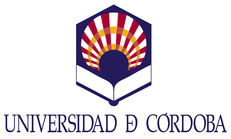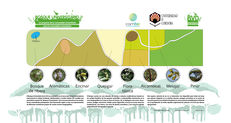The Campus Forest project aspires to build, within the same campus, a display of ecosystems characteristic to the biogeographic environment of the Spanish University of Cordoba. Our ultimate aim is to environmentally renovate and promote some underutilized spaces still awaiting to be properly planned, as well as to transform the green spaces into outdoor laboratories where students from different disciplines can find a learning space that allows them to develop activities in accordance with their academic training. Likewise, these spaces will become suitable resources for research activities.
This project is coordinated by the Environmental Protection Service in the frame of the University environmental policy, and is being carried out through a participatory process with all the stakeholders (management and government bodies, departments, companies, students, council and local government, environmental NGOs) involved in its design, implementation, exploitation and sustainable maintenance. The Campus Forest is, therefore, an example of the integration of sustainability into the management, education, and research activities within the Campus, as well as interaction with the surrounding community. A project made by the community for the community.
It started in 2014, with the creation of an interdepartmental working group to design, implement, exploit and sustainably maintain the Campus Forest as a conservation and teaching resource. A roadmap was established with one clear idea in mind: in the near future, the campus itself will represent different natural spaces. For the first intervention, the chosen space was located in a surface area of 4,000 m2 approx. This area was chosen because it lacks important vegetation, there were no buildings in it, it was accessible and classed as a green space.
The Forest has been created through several participatory plantations where more than 250 people from the campus community themselves planted the selected trees and bushes. The result is a collection of over 300 individuals from numerous Mediterranean species based on the floristic entourage of the sclerophyllous and subsclerophyllous species dominant on the landscape where the campus is located. Thus, it has separate areas, each one dedicated to representing one of the most typical woodlands in our climate (riverbank woodland with a surrounding pond, evergreen-oak grove, quejigo oak formation, cork oak forest, grove of melojos, carob grove, or pine forest). The resulting area also has microinterventions to help and protect fauna, interpretative signs and street furniture to promote its liveability and use as a meeting point.
One added challenge underlying the management process is to make the Campus Forest be understood as a multidisciplinary teaching and research resource. In this sense, there are many subjects that already include activities at the Campus Forest, as well as new research fields within it, regarding on biodiversity conservation and management.
For more information email [email protected] or visit www.uco.es/bosque.









 Except where otherwise stated, content on this site is
licensed under a Creative Commons Attribution 3.0 License.
Except where otherwise stated, content on this site is
licensed under a Creative Commons Attribution 3.0 License.
